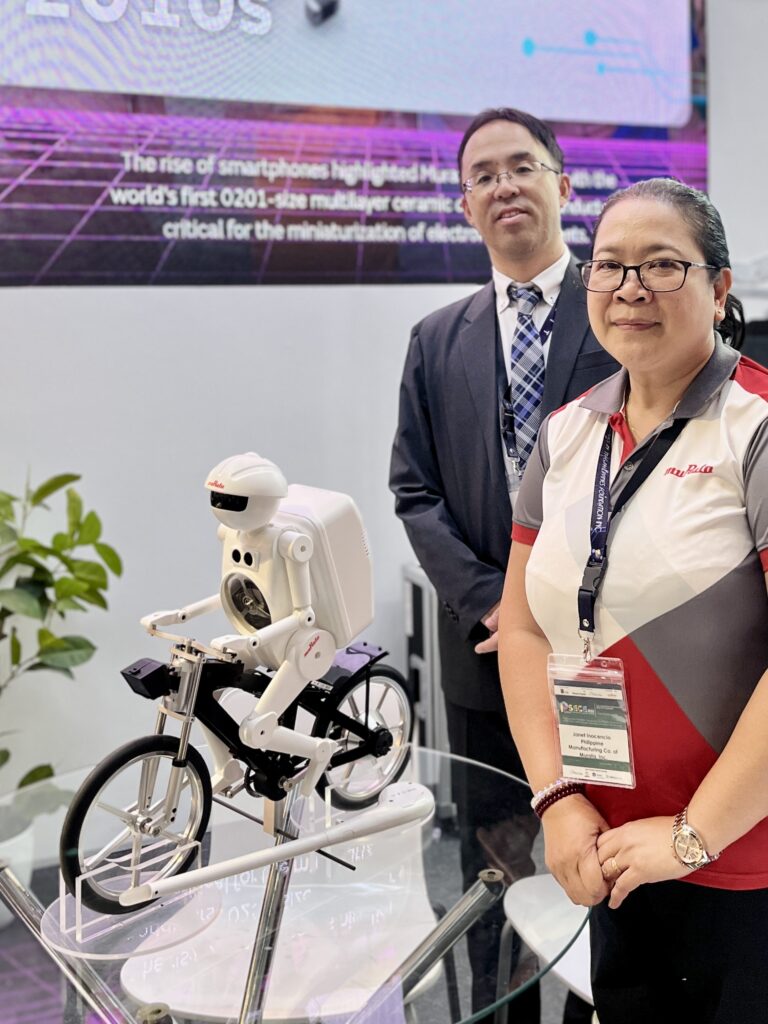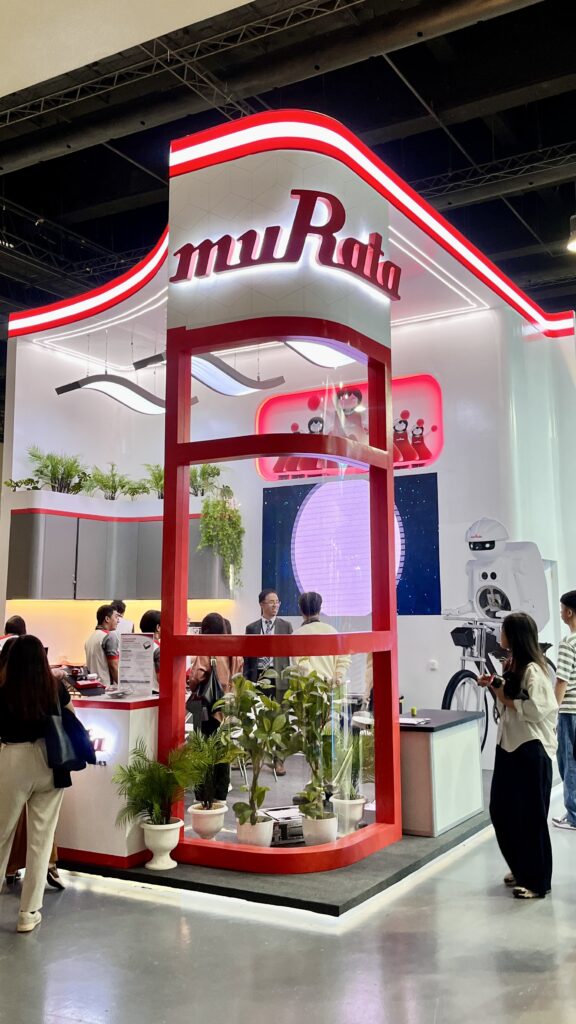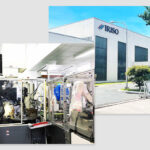ASIA ELECTRONICS INDUSTRYYOUR WINDOW TO SMART MANUFACTURING
Murata Philippines Sees New Trends to Stir MLCC Growth
Fresh from the recent completion of its fourth manufacturing building in the Philippines, Philippine Manufacturing Co. of Murata, Inc., took the spotlight at the three-day Philippine Semiconductor & Electronics Convention and Exhibition (PSECE) which concluded Thursday (Oct. 30).
Philippine Manufacturing Co. of Murata is the manufacturing subsidiary of the Japan-headquartered Murata Manufacturing Co., Ltd., while its local sales arm is Murata Electronics Philippines, Inc.
Global electronics production scene continues to confront various market challenges. Nonetheless, Murata has been expanding its multilayer ceramic capacitors (MLCCs) production not just in the Philippines but also in other countries in Southeast Asia, China, and in Japan, to flexibly respond to future market demand.

Upbeat Outlook
In an interview with Asia Electronics Industry (AEI), Daisuke Hayakumo, President, Murata Electronics Philippines, Inc., said the company is seeing big potential from the data center market in the Philippines, which has been increasing of late. This segment, Hayakumo said, is likely to grow 5 percent in 2025 compared to last year and will likely extend its strength until 2026. Specifically, the demand is coming from memory makers for data center applications.
The company expects a flat growth for the automotive segment for this year but hopes for a flat or 3 to 5 percent growth in 2026 due to growing demand from the electric vehicle (EV) field.
“We expect (demand for) EVs will increase and EVs require more capacitors, and this will lift the demand from the automotive segment,” said Hayakumo.
The company is the exhibition partner of PSECE 2025. Hayakumo said they are taking advantage of the Philippine exhibition to get the pulse of its local customers and expand sales leads to new fields.
“Our (sales) comes from about 80 to 90 percent existing customers. Our target is to increase our sales further from other segments, new customers,” said Hayakumo.

Meanwhile, Janet Inocencio, General Manager of Philippine Manufacturing Co. of Murata for Sustainability Promotion Department, Gen. Affairs, CSR & Corporate Communications, said while the general semiconductor demand globally remains flat, they expect end devices that use MLCCs will continue to increase with the advent of new technologies, specifically from the health, mobility, and communication segments. This is the reason, she said, the company has been reinforcing its production capacities on most of its global sites.
Balanced Capacity Expansion
Philippine Manufacturing Co. of Murata held a completion ceremony on October 22 for its fourth production building inside its 14-year old facility at the First Philippine Industrial Park in Tanauan City, Batangas, about 60 kilometers south of the Manila capital.
With an investment of ¥11.2 billion (US$73 million), the two-story, 32,454sq.m building will reinforce the company’s production of MLCCs already existing in two other buildings. Inocencio said a third building has been utilized to produce raw materials known as sheeting process, instead of importing such from Japan.
The company did not disclose how much the new building would add up to Philippine plant’s output, but Inocencio said this will double the company’s current workforce of 4,395 when it becomes operational in 2029.
Model Plant for Renewable Energy
In January 2022, the Philippine plant has become the company’s inaugural overseas production site to transition to 100 percent renewable energy. Particularly, the plant transitioned to geothermal power as company’s main energy source. In addition, it has also installed over 6,700 solar panels to further promote the use of renewable energy.

Inocencio said Murata’s Philippine plant has received various accolades for its sustainability efforts and has become a model facility of other Philippine companies planning to shift to full renewable energy operations.
“It’s part of our advocacy as well, part of the Murata philosophy to support the environment and give back to the society. this initiative created a very positive image about the company. We have become the benchmark company of other companies who wanted to shift to renewable energy,” said Inocencio.
31 October 2025




